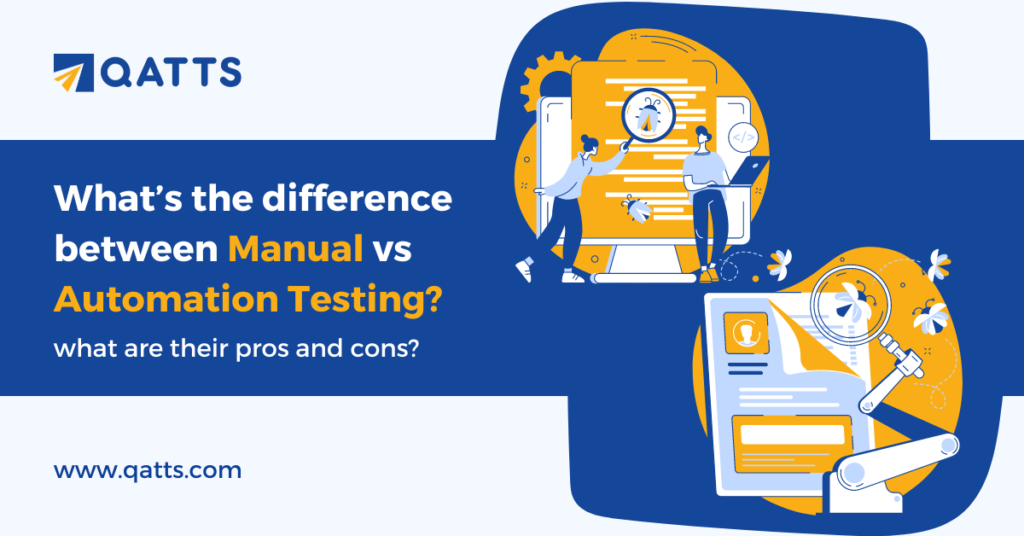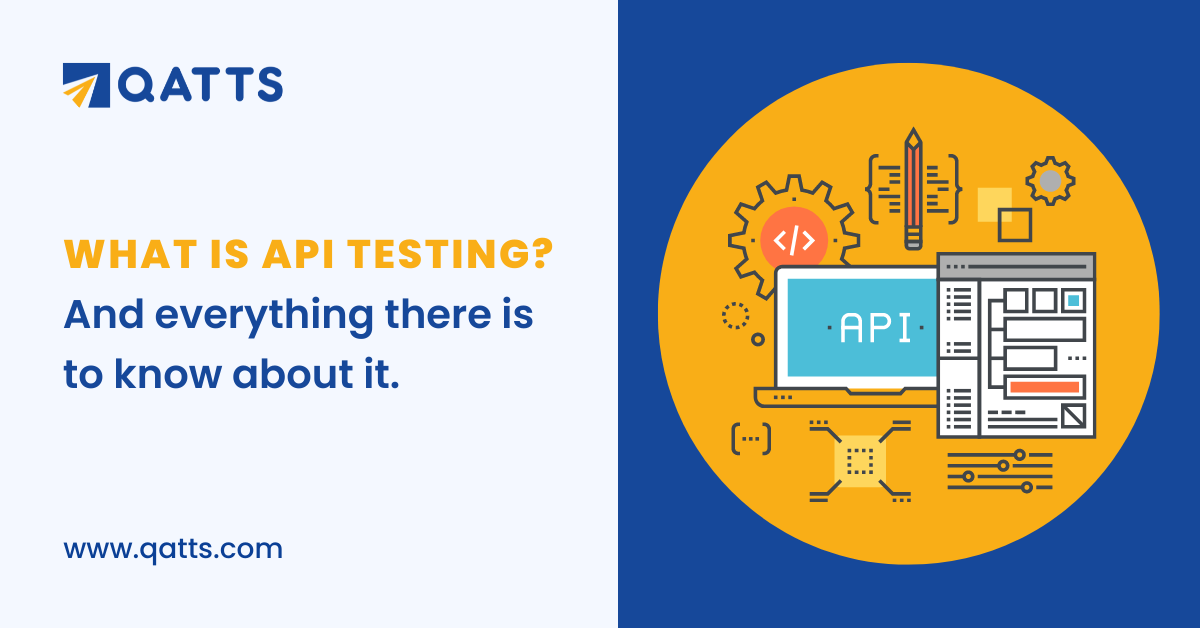
Software testing has become a very dominant feature of the current world, where a number of softwares are tested on a daily basis, for various purposes. A layman could think that all software testing comes under the same category, but software testing can be divided into two broad categories: manual testing and automation testing. In this blog, we will be seeing the main difference between these two types of testing. The main difference between manual testing and automation testing depends on various factors like course time, cost, and quality, all of which are taken into consideration while performing software tests.
Manual Testing Vs Automation Testing is the kind of comparison where each has its own importance and benefits over the other.
What is Manual Testing?
Manual testing is the process where a user manual tests the software that is currently being worked upon. A QA analyst is usually the one to do this, where the person discovers bugs in the software, checks whether or not all the essential features of the given application or software are working appropriately.
The test performers execute the test cases and generate test reports of the software they are working on, themselves, without any help from automation tools or other tools.
Manual testing is usually performed by an expert in the field, and is a laborious process, when compared to automation testing.
What is Automation Testing?
Automation testing is the process where the test performers simply write the code or test scripts that are to be used during the automation testing process. Automation testing is usually incorporated because it takes a less time when compared to manual testing.
In automation testing, there’s always a pre-scripted test which the automation test always takes reference of, by default, to check whether the actual results are as the same as the expected results. This helps the test performers determine whether the software needs any further improvements, based on the test results.
While automation testing doesn’t require a manual test performer to always oversee the testing process, a manual tester is nevertheless required to create the initial testing scripts. Automation testing also helps execute repetitive tasks and regression testing without any manual intervention.
What is the difference between manual and automation testing?
The main difference between automation testing and manual testing is that while automation only requires basic input from the user, after which tests are performed automatically, manual testing is entirely dependent on test performers, from the start to finish.
Differences between manual testing and automation testing
Just as in life, in software testing too, the smallest differences make the biggest impact, which is highly applicable and appropriate in the case of automated and manual testing. Let us look at some key differences between automation and manual testing below:
| Test Parameters | Manual Testing | Automation Testing |
|---|---|---|
| Definition | A test performer oversees the entire testing process of the software | Automation testing tools take care of the entire software testing process |
| Processing time | Takes up human resources and is time consuming | Faster process than manual testing |
| Exploratory Testing | Random or exploratory testing is possible in manual testing | Automation testing doesn’t allow random or exploratory testing |
| Initial investment | In manual testing, the initial investment is very low, but the ROI is significantly lesser towards the end. | While the initial investment for automation testing is high, the ROI is better towards the finish |
| Reliability | There’s always the chance that manual testing is not highly reliable, as there’s scope for human error | In automation testing, given that the tests are performed by tools and scripts, there is a less chance for testing fatigue, making it more reliable. |
| UI Change | Minute changes wouldn’t affect manual testing, and can be incorporated very easily | If there is to be a change in the UI, then Automated Test Scripts need to be modified to work as expected |
| Cost effective | Not very cost effective for high volume regression, but perfect for low volume regression | Not very cost effective for low volume regression, but perfect for high volume regression |
| Test report visibility | Test records are not easily accessible to everyone, as they are manually recorded in either word or excel, which are usually in the possession of a single individual, who performs the test. | Test records are easily accessible to those who need them, who could simply login to the automated system to access them. |
| Human observation | Since manual testing is dependent on users, it allows human observation, and provides a human friendly environment. | Given that automation testing doesn’t really rely on human interference, it may not provide a highly positive experience for humans, narrowing the scope for human observation |
| Performance testing | Performance testing is not feasible to be done manually | Load Testing, Stress Testing, Spike Testing, etc. are the performance tests, which have to be mandatorily tested by an automation tool |
| Parallel execution | While manual testing supports parallel execution across different platforms, it would require an increase in human resources | Automated testing not only supports parallel execution, but also helps reduce test execution time |
| Batch testing | Batch testing is not supported in manual testing | Multiple Test Scripts can be batched together for nightly execution in automated testing |
| Programming knowledge | Programming knowledge is not compulsory in manual testing | Programming knowledge is a must in automation testing |
| Set up | A straightforward test execution setup is required | A less complex test execution set up is required. |
| Ideal approach | Manual testing is usually preferred when a test case needs to be run just once or twice | Automation testing comes in handy when required to frequently execute the same set of test cases |
| Build verification testing | Build Verification Testing is a very laborious process in manual testing | Automation testing is ideal for Build Verification Testing (BVT). |
| Deadlines | Manual testing has the highest chance of missing the given deadline | Automated testing rarely misses a deadline |
| Framework | Manual testing doesn’t use any framework, but might use guidelines, checklists or stringent processes to draft certain test cases. | Automation testing uses frameworks like Data Drive, Keyword, Hybrid to accelerate the process of testing. |
| DevOps | Manual testing defeats the principle of DevOps, which is incorporated in automated testing | Automation tests are an integral part of DevOps cycle and help with Build Verification Testing |
| When to use | Manual testing is the most suitable for Exploratory, Usability and Adhoc Testing. | Automation testing is the most suitable for Regression Testing, Performance Testing, Load Testing or highly repeatable functional test cases. |
| Test execution | Done by QA testers manually | Done automatically with automation tools and scripts |
| Test efficiency | More time-consuming, less efficient | More efficient, less time consuming |
| Types of tasks | Only manual tasks | Most tasks can be automated, including real user simulations |
| Test coverage | Sufficient test coverage is difficult to ensure | Has great test coverage |
As mentioned earlier, every form of testing has its own pros and cons and is used based on the requirements of an institution or an individual. Let us look at some of the pros and cons of manual testing and automation testing.
Manual testing: Pros and Cons
Manual testing and its Pros:
- Feedback is usually fast and accurate, as any manual testing process involves the test performer overlooking the entire process at any given time, who can easily identify any mistakes
- Usually less expensive, as automation tools aren’t required for the process of testing
- Coding knowledge is not a requirement for manual testing, as is the case for automation testing. This helps reduce time and small changes can be made quickly.
Manual testing and its Cons:
- Manual testing is always prone to mistakes and errors as it involves human intervention. Human errors are possible, no matter what.
- The testing process cannot be recorded, making it impossible to reuse the manual test again.
- Some tasks are difficult to perform manually, which may require additional testing time.
Automation testing: Pros and Cons
Automation testing and its Pros:
- More bugs can be identified in automation testing, when compared to manual testing
- Automation testing is a quick and efficient process, as most of the testing process is automated
- The same kind of testing operations can be reused and executed over and over as automation testing process can be recorded
- In automation testing, there’s no scope for testing fatigue or tiring, as almost the entire process is conducted using software tools, which do not require any manual intervention.
- Increased productivity, as it provides fast and accurate testing results
- Supports various applications
- Testing coverage is very high, as automation testing tools never forget to check even the tiniest units
Automation testing and its Cons:
- Getting an insight into the UI, like colors, fonts, sizes, contrast or button sizes, etc., is very difficult without human intervention. This might turn out to be a hiccup during the final stages, as UI is very important for consumers
- The cost of automation testing can escalate due to the various tools required for it, which are expensive.
- Every automation testing process has its own limitations, as it is something that is still developing, and is not entirely fail-proof.
- Test maintenance is costly and debugging the test script can be tricky.
Conclusion
Manual testing and automation testing, as we have seen above, have their own ups and downs, own pros and cons. Errors are possible in any form of testing, but ultimately, no method of testing is possible without manual intervention to some degree. Depending on our requirements, budget, and vailable resources, we need to decide which form of testing is more appropriate for us: manual testing or automated testing. QATTS is an automation testing tool that has been designed with the test performer in mind, which reduces the stress on the person performing the test.


